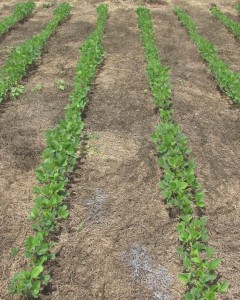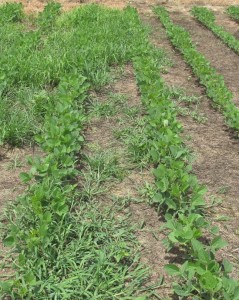With planting season just around the corner there are a few management considerations to keep in mind with respect to your cover crop. The past couple of months have been frigid which slowed the progress of most all cover crop species in Tennessee. Although this might not have as great of an impact on the other attributes of cover crops, this could possibly lead to some problems with cover crops being managed for weed control.
When managing a cover crop for weed suppression, biomass is the name of the game. Our research has consistently indicated that across cover crop species, increased biomass will ultimately lead to increased weed suppression. Waiting until closer to crop planting will allow these cover crops more time to take advantage of spring time weather and increase above ground growth. Waiting until closer to planting will also allow better predictions of the upcoming weather and reduce the chance that a cover crop is burned down and then the crop not be able to be planted for a month or more.
Preliminary research has indicated that cover crop biomass and weed control can be maximized in soybeans by waiting to burndown until 7 to 0 days before planting without having a negative impact on soybean growth or performance. Sufficient research has not been conducted in corn or cotton to know if delaying cover crop burndown this long will negatively impact your cash crop. However, burndown applications 10-14 days before planting have been sufficient for allowing enough cover crop growth to help with weed control.
Please be aware that waiting to burndown vegetative foliage this close to planting increases the risk of cutworm infestation. Moreover, leaving that green bridge can also increase the probability of other insect issues depending upon the crop.
Choosing the correct product for burndown is another important decision when terminating a cover crop. In our research we have predominantly used glyphosate or Gramoxone (paraquat), alone or in combination with other products. In general, Gramoxone is better on broadleaf cover crop species and glyphosate is better on grass cover crop species. However, either can be very effective on grass and/or broadleaf cover crop species when applied in combination with other products. Tank mixing Gramoxone with atrazine, metribuzin, or Caparol and/or Cotoran (depending on the upcoming cash crop) should improve control over Gramoxone alone and will also add some residual activity. We have also used glyphosate + dicamba for termination of a range of cover crop species with very good success, but you should be mindful of the plant back restrictions to cotton or soybeans when adding dicamba. For cotton the plant back after 8 oz/A of dicamba is 15 days and for soybean it is 14 days. Any rates above 8 oz/A require a 30 day plant back for both crops.
Even with a cover crop, sound management strategies still need to be utilized for season long weed control. We have had good success combining cover crops with residual herbicides for increased weed control. Finally, don’t forget to continue monitoring fields so that timely herbicide applications can be made when needed.




Nicely done, to the point. I just waded through a 17-page PDF newsletter from another state and couldn’t find as much clarity or direction in it as I just did in the 6 paragraphs you just posted.
Very tipical of MY UT Extention, and research guys. Just as the last comment said. Brief, concise, to the point. Garrett is talking to me, not to his doctor friends.
Thank you UT